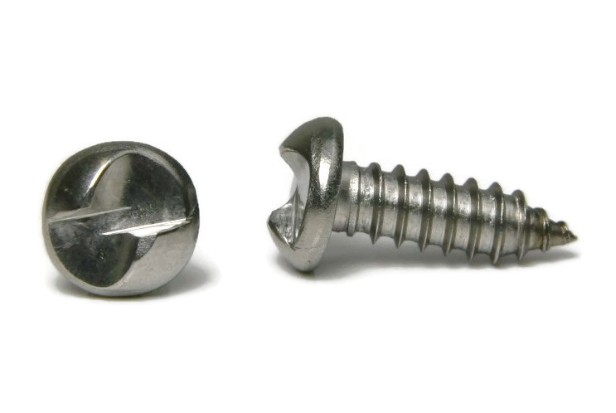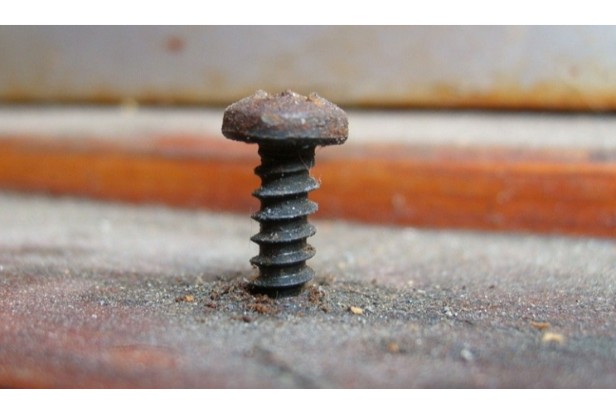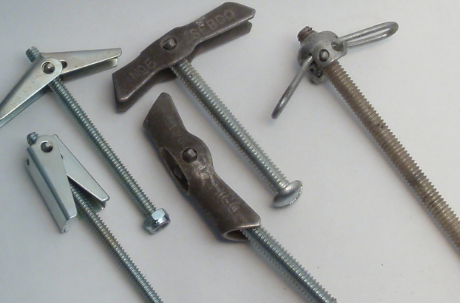In order to improve project efficiency, find out which type of screw is best for the task in this post.
Screws are common fasteners, similar in size, shape, and function to nails, except screws have ridges known as threads that are intended to grip the inside of the screw hole when the screw is driven into the material. There are numerous types of screws in a variety of sizes and shapes, as well as some specialized screws, such as hammer-drive screws or double-ended screws, which aren’t used with a screwdriver.
Five recognizable components make up a screw. The drive is the depression in the screw head where a screwdriver or driver bit must be inserted to drive the screw. The top of the screw, known as the head, is typically wide and rounded to grip the material’s surface and prevent the screw from ripping straight through. The shank refers to the smooth area between the head and the threads. The screw’s threads refer to the ridged portion of the screw that wraps around the main shaft. The screw’s tip is its pointed end.
Although screws can be used in many different materials, including concrete, brick, or metal, they are most frequently found in wood, drywall, and machinery. It is advised that you do your research on the different screw types to increase the safety and effectiveness of your DIY projects. This guide can help get you started with 15 types of screws, their intended purpose, and some information on how to choose the right screw for your next project.
Table of Contents
Screw Design
Although screws resemble nails in appearance, their distinctive heads, ridged surfaces, and driving tools serve as their primary distinguishing features. Depending on the project, screws are either used with a drill or a screwdriver. Drills are used to insert the screw directly through wood or other materials, whereas screwdrivers are typically used to screw screws into pre-made holes, such as when assembling furniture.
The ridges around the cylinder are called threads, and they help secure the screw. In order to effectively distribute the force, the screw head is designed differently depending on the driving device. On some screws, the shank is the smooth region directly beneath the head. Screws can be produced from a variety of materials, including stainless steel and aluminum, and they can be coated to increase their toughness and longevity.
15 Types of Screws
Screws are incredibly versatile and dependable fasteners because they come in a wide variety of forms, compositions, sizes, and functions. Be sure to check what screws are the best for your project.
Masonry Screws
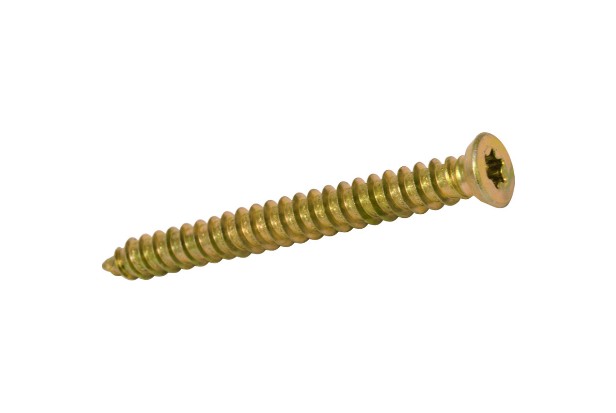
Best for: affixing metal or wood to concrete or other masonry materials.
Brick, mortar joints, and concrete are examples of masonry materials that can be used with masonry screws. Masonry screws can also be used to fasten wooden floor plates to concrete foundations. They are frequently used outdoors to secure objects, such as rain gutters, to the brick exterior.
Before inserting these screws, a pilot hole must be created using a masonry bit and a hammer drill. The two different thread patterns on one screw are their most distinguishing feature. The first is tiny and fits snugly against the screw shaft, while the second is much larger and sticks out from the screw. A hex washer head that will rest on top of the material or a flat head to countersink the screw should be chosen.
Wood Screws
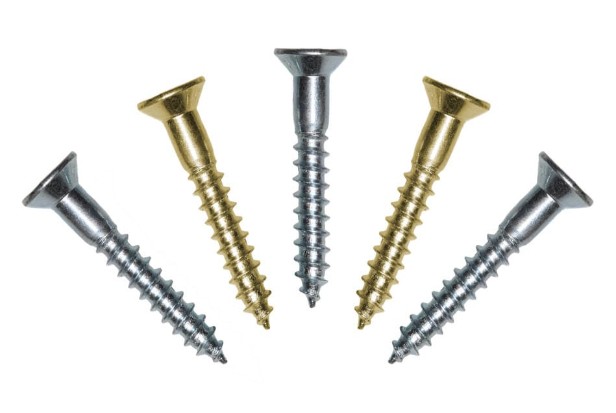
Best for: putting together two or more pieces of wood, such as furniture, molding, or wall studs.
Wood screws are used to join various pieces of wood together and are undoubtedly the most popular screw among DIYers. They typically have a sharp, piercing tip that easily penetrates wooden surfaces, and they can have a fully or partially threaded shaft. Therefore, a pilot hole is typically not necessary for wood screws.
For your DIY projects, it’s simple to find these screws at a nearby home improvement store. However, make sure that you are only using these screws with wood. They are available in a wide range of sizes and drives to suit your needs. In order to effectively grip concrete or other non-fibrous materials, the threads must be closer together.
Drywall Screws
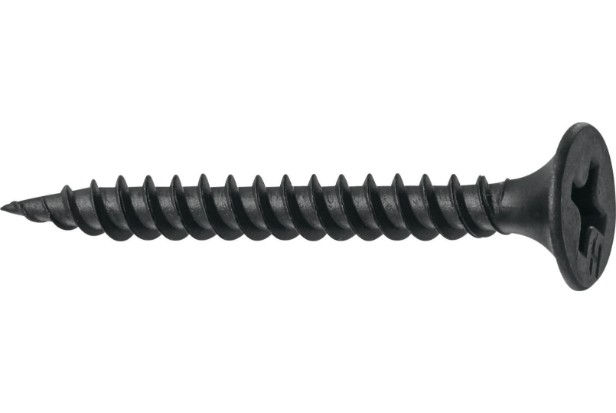
Best for: wall studs before attaching drywall panels.
When attaching drywall to wooden studs or beams, drywall screws with their coarse threads are the best choice. DIYers frequently use these screws to build new rooms inside of already existing structures or to finish basements. While they are best suited for joining drywall to wood studs, fine thread drywall screws can also be used to connect drywall to metal studs.
These screws range in length, but the majority have flat heads that are designed to countersink just below the drywall’s surface. The screws can now be covered up more easily with joint compound and paint.
Decking Screws
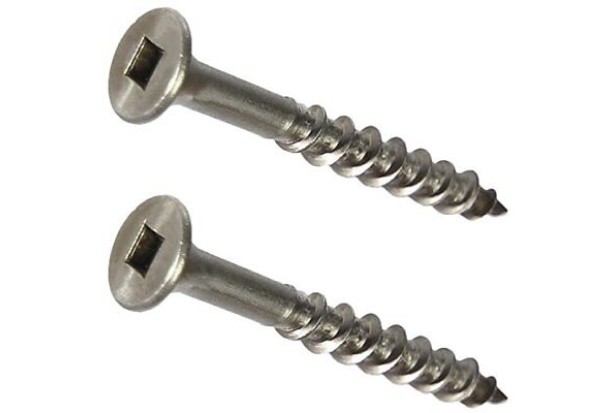
Best for: securing deck boards to joists.
Designed to make building and repairing decks easier, decking screws are intended to secure deck boards to deck joists. It is simple to paint, stain, and use the deck without worrying about protruding screws thanks to their flat heads, which are perfect for countersinking just below the surface of the deck boards.
To prevent rusting and corrosion, these screws are constructed from stainless steel or another, frequently coated, non-corrosive material. The screws come in several sizes and with various drive types, so you can choose the right option for your decking project.
MDF Screws
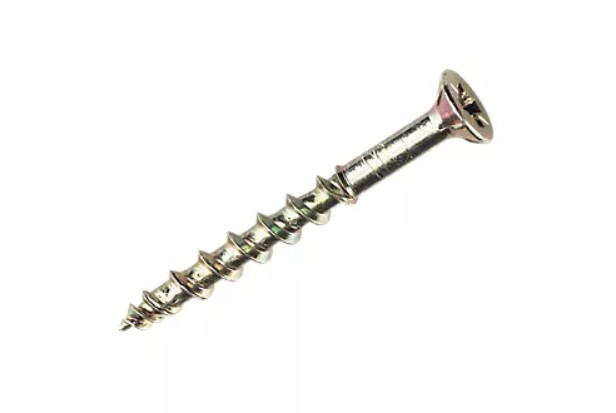
Best for: Medium density fiberboard (MDF) self-drilling insertion
As the name suggests, MDF screws are designed for use with medium density fiberboard, also referred to as MDF. The reason why these screws are better suited to MDF than standard wood screws is that MDF tends to be tougher to penetrate than solid wood. If you want to use standard wood screws, you can drill pilot holes in the MDF, but if you’re using self-drilling MDF screws, you don’t have to.
These screws’ unique thread and tip work like drill bits to cut through the hard MDF wood. When building furniture, interior trim, or other structures with MDF wood as the main component, use these screws.
Sheet Metal Screws
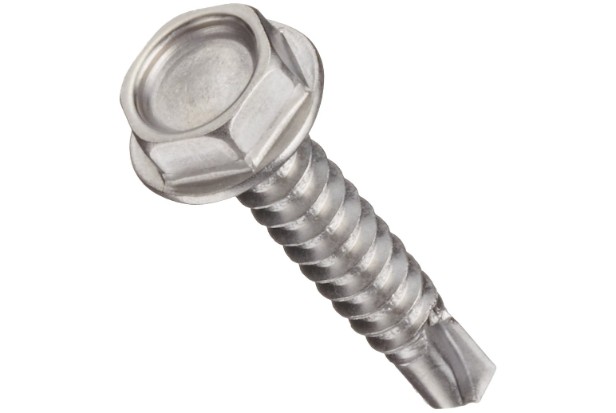
Best for: Securing various types of material to sheet metal.
To join a piece of sheet metal to a piece of wood, plastic, or even another piece of metal, use sheet metal screws. These screws have fine threads for superior grip and sharp tips designed to pierce hard metal surfaces. The head shapes of sheet metal screws include flat, rounded, and hex. They are available in a variety of sizes.
While carbon-steel versions are only intended for indoor use, sheet metal screws made of rust-resistant stainless steel can be used both indoors and outdoors.
Self-Tapping Screws
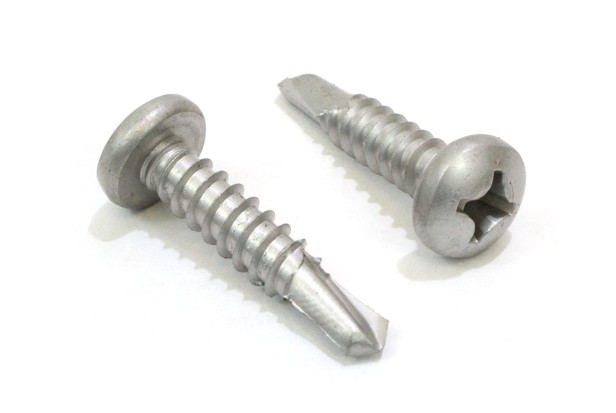
Best for: Internal thread creation while installing.
DIYers and professionals can use self-tapping screws to cut or tap internal threads when the screw is driven into the target material. Self-tapping screws may still need a pilot hole, though, because they don’t always reduce the possibility of some soft materials splitting.
In order to avoid the need for a pilot hole during installation, self-drilling screws have a drill bit tip. Depending on the thread design, these screws can overlap with other types of screws in a wide range of applications. For example, self-drilling MDF screws or sheet metal self-tapping screws can be purchased for DIY MDF construction projects.
Double-Ended Screws
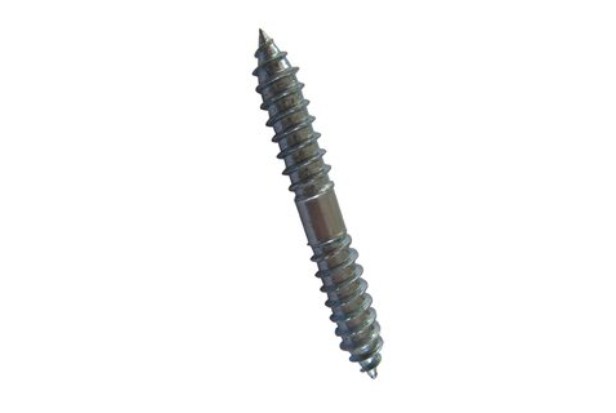
Best for: pre-drilled holes are used to join two pieces of wood together.
Double-ended screws are made to be inserted into two pre-drilled pilot holes to join pieces of wood together, and are easily identified because they lack a head. They are very common in furniture making and are often included in pre-fabricated furniture packages for you to quickly put together your new desk, table, or bookshelf.
The screws have lag threads on both ends which taper to a midpoint. Use a driving tool or locking pliers to insert the screws into the pre-drilled holes. Just remember that after they are installed, these screws are not meant to be removed. Removal can damage the pre-drilled holes, making it difficult to rebuild the furniture or object.
Dowel Screws
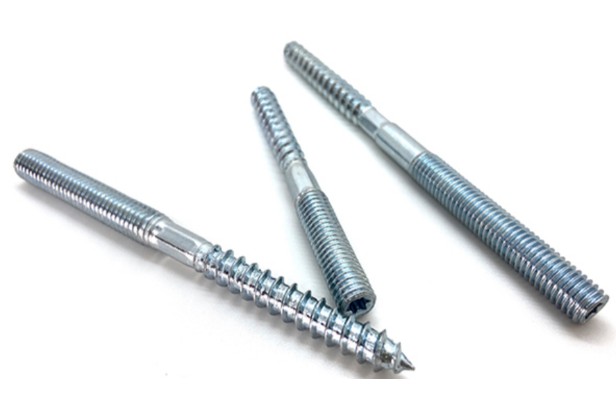
Best for: fastening or joining two pieces of wood, furniture making
Also called double-ended screws (for obvious reasons) and wood-screw threaded studs, dowel screws don’t feature heads; instead, they feature lag threads on both ends that taper to a blunt midpoint.
These screws can also be drilled into the wood directly due to their threads, even though they are intended to be inserted into pre-drilled pilot holes.
Dowel screws are frequently used to join or fasten two pieces of wood together. They can now be found frequently in the construction of end-to-end joints, the installation of finials, the manufacture of furniture, and other woodworking tasks, particularly those involving blind holes and single hidden fasteners.
Due to the lack of a head, installation calls for a driver tool or locking pliers.
Mirror Screws
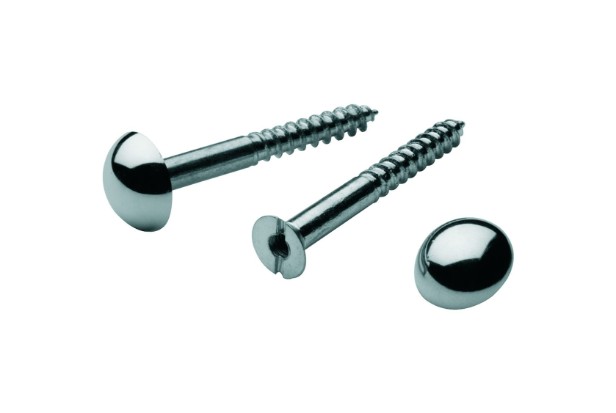
Best for: mirror mounting without the use of extra brackets.
These screws have tapered rubber grommets that are designed to keep the metal screws from pressing directly into the mirror when attaching mirrors to walls. You can thread the cover cap into the threaded hole of this special kind of screw, which has a slotted, countersunk head and a threaded hole, to create a sleek, finished fastener to support the mirror.
These screws can be used anywhere around the home, including the bathroom. The additional moisture and humidity in the bathroom or kitchen is not a concern because the stainless steel construction and zinc coating protect them from rust and corrosion.
Chipboard Screws
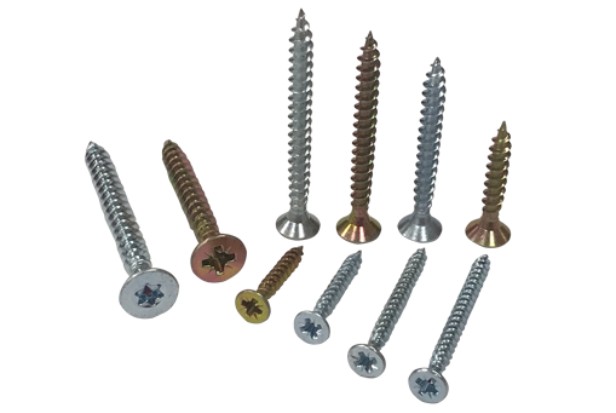
Best for: chipboard, particle board, and fibre board
Chipboard screws, as their name implies, are self-tapping screws designed specifically for chipboard. They are also referred to as twinfast screws and particle board screws.
It is simple to drive these screws into chipboard, particle board, and fiber board of various densities due to the coarse thread, which has two times more thread pitch than standard wood screws.
They can also be put in place quickly and easily with standard drive bits and hand screwdrivers thanks to their generous thread. The screw’s self-centering point aids in straight installation and lowers the chance of chipboard splitting.
Security Screws
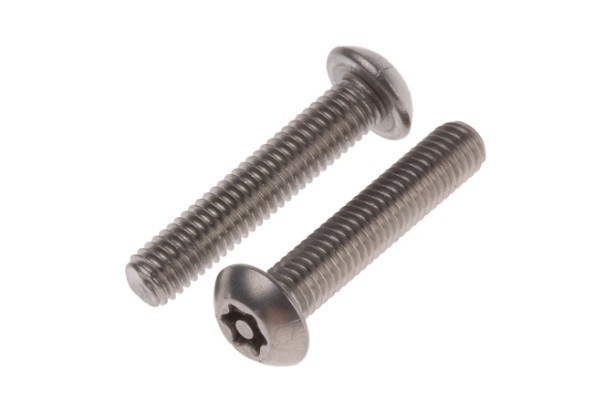
Best for: Providing a mild deterrent to screw removal and tampering.
In essence, security screws are regular screws with a special head that makes it more challenging to remove them without the right tools. These fasteners can be used to help protect private property, but they are a good choice for public spaces that are vulnerable to vandalism, theft, and tampering.
However, it should be mentioned that with the right screwdriver or even the right driver bit, you can remove these screws, so the additional security is really only effective against those that are unwilling to source the right tools.
Hammer-Drive Screws
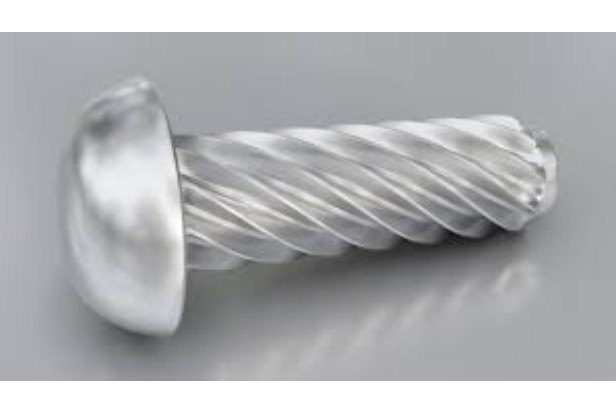
Best for: the fixing of signs, nameplates, or comparable items.
To drive a hammer-drive screw in, use a hammer, mallet, or special tool that strikes the screw head like a nail. These screws have strong, durable shafts with multiple start threads and large helical angles designed to hold the screw in place once it is installed. They also have thick, rounded heads.
Use hammer drive screws to fasten objects to walls, such as nameplates or signs, with a single blow of the hammer. Just keep in mind that the screws are made for permanent installation, so they are not the best choice if you will need to change the sign or replace the nameplate bracket at some point.
Machine Screws
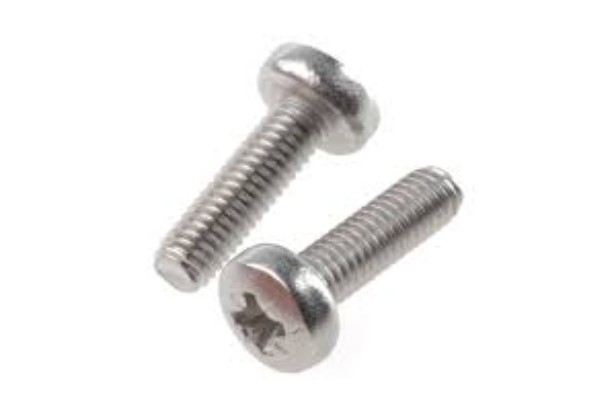
Best for: Fastening various parts of a machine or device together.
These screws are used in many different items to join various machinery or electronic parts together. You can find machine screws in electronic devices, appliances, manufacturing equipment, and more. Their heads can be flat or rounded, but they usually lack pointed tips.
Machine screws range widely in size and drive type, from tiny machine screws used in laptops and other compact tech, to large machine screws seen in the automotive and manufacturing industries.
Pocket Hole Screws
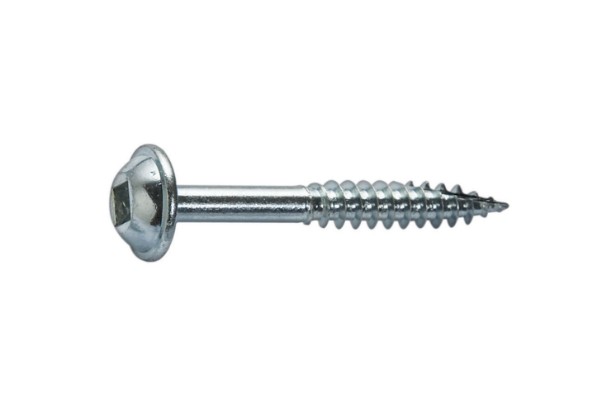
Best for: Drawing two boards together or securing parts of wooden furniture together.
Particularly made for use in wooden furniture, pocket screws. To join two pieces of wood together, they have unique heads and shanks. This is made possible by the self-drilling tip, self-taping threads, and broad washer heads that work together to stop you from overdriving screws through softer wood.
The screw heads are strong, durable, and typically have a square recess that improves the grip of the screwdriver in the drive recess. They are specially suited for pocket hole joinery because of this confluence of factors.
How to Choose Screws
Given the wide variety of screws to choose from, it can be overwhelming to try to find the right type of screw for your project. First, take into account the material you will be working with to help you narrow down your choices. For instance, while drywall screws are best used to fasten drywall to wooden studs, masonry screws are made for fastening into concrete and other masonry materials.
The right type of screw should also protect the materials it is joining, so the screw should have the appropriate head size, length, and threads to avoid splitting wood, piercing through drywall, or causing metal to slip. A firm grip and a sturdy construction are required because screws are designed to grip the target material. It is not a safe option to try to use a wood screw in concrete if the screw cannot pierce the target material or cannot grip the material properly. By choosing the appropriate screw for the job, risks and safety concerns can be eliminated.
Summary: Types of Screws for Every Use!
Screws exist in abundance, with one screw for every need and purpose. The need to know the appropriate screw types, when they are needed, and the best ways to use them is made more crucial by the specificity of their purposes.
This overview of screw types should help to clarify this so that you can select the correct ones for your upcoming construction or hobby project.
FAQs
What Are the Strongest Type of Screws?
In the world of screws, the self-tapping screw is often seen as one of the strongest and most versatile options.
What Type of Screws Do You Use for Metal?
Self-tapping screws are good for use with metals, various types of plastics (plywood, fiberglass, polycarbonates), and cast or forged material, like iron, aluminum, brass or bronze. Self-tapping screws can also be used on surfaces where a nut can’t be used to secure the back end.
What Are #10 Screws Used For?
#10 screw: A #10 screw has a 3/16-inch diameter, and its typical length ranges from 3/4 to 4 inches. This screw is used for general construction purposes, such as building decks and storage sheds. #12 screw: A #12 screw has a diameter of 7/32 of an inch and is intended for heavy-duty use—we’re talking structural framing.

